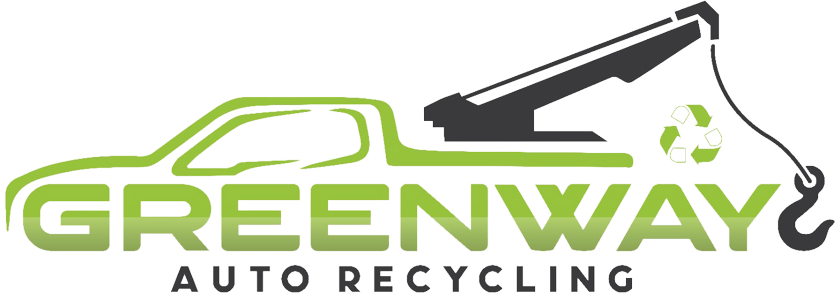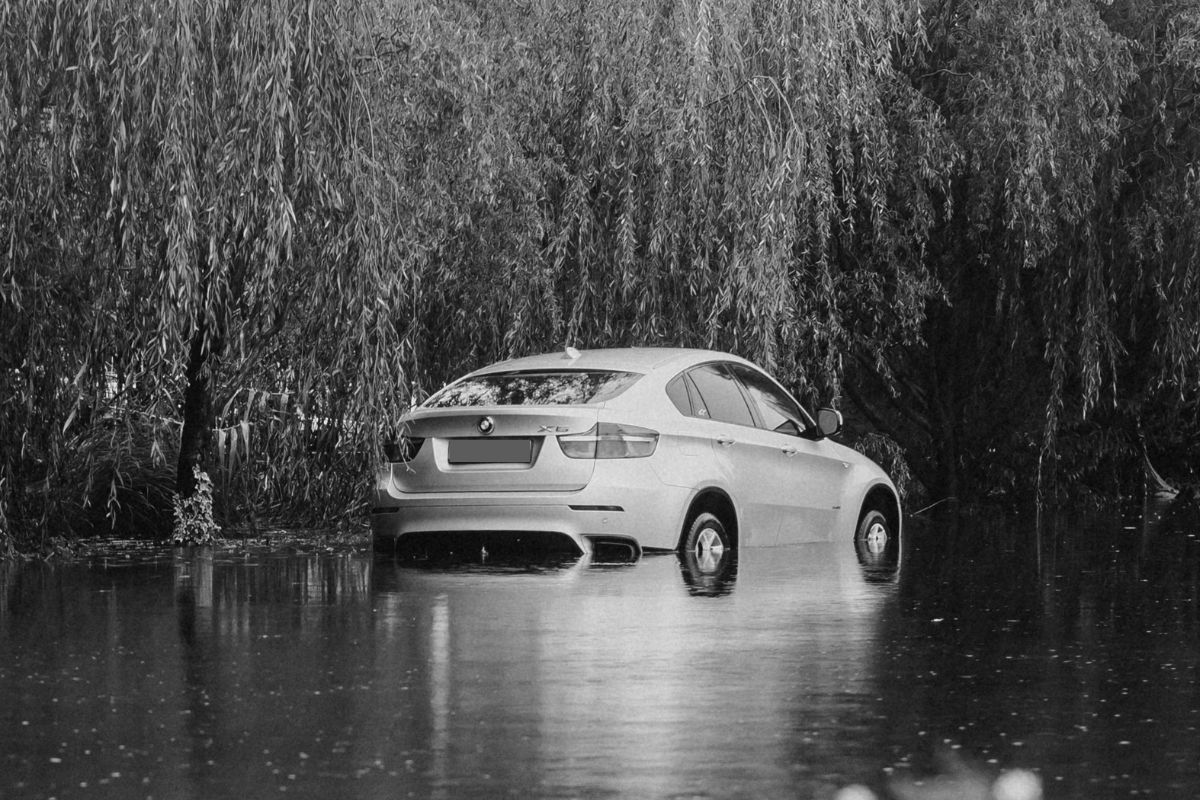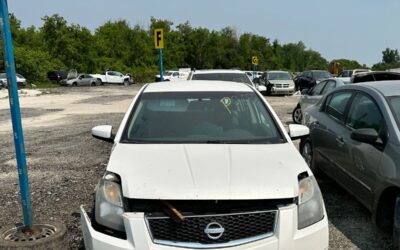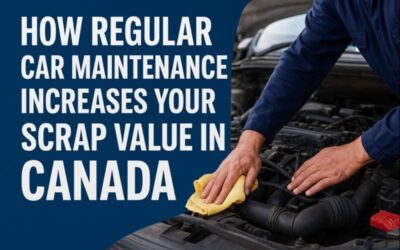Introduction
When a storm approaches, you often have all sorts of things running through your mind — securing your home, gathering supplies, and ensuring your family’s safety. However, your vehicle is usually an afterthought until it’s too late. Flooding can damage a car’s mechanical, electrical, and even environmental components.
Preparation is key — here are a few simple steps to protect your vehicle before the storm hits. This section will outline what you should do before a storm hits and after flooding has occurred. This serves as a working checklist to help you minimize damage and recover safely.
Before the Storm: How to Prepare Your Vehicle
Preparation is key — here are simple steps to protect your vehicle before the storm hits
- Move Your Vehicle to Higher Ground
Moving your vehicle to higher ground, long before the storm, is one of the most effective ways to avoid flooding damage. Even though we should all take the possibility of flooding seriously, sometimes we still get caught off guard. Parking your vehicle to prevent flooding requires some thought and planning.
A multi-level parking garage, a raised driveway, or any hill in your area are all options. Also, never park underground. Underground parking structures can flood quickly and will trap your vehicle. If you must park near your home or business, avoid areas near storm drains, creeks, rivers, or other low-lying spots prone to flooding.
- Disconnect the Battery (If Leaving the Car)
If you can’t evacuate your vehicle and must leave it behind, disconnect the battery. If water gets inside, this will prevent short circuits and possibly an electrical fire. Make sure you can do this, or have someone, or a mechanic, help you beforehand.
- Close All Windows and Seal Any Openings
Ensure every window and door is tightly closed. Cover sunroofs, air vents, or weak seals with a waterproof tarp or plastic sheeting. This helps limit the amount of water entering the cabin and protects the items inside your vehicle. Weatherproof tape can affix the tarps or sheeting to your car.
- Document the Condition of Your Vehicle
Take pictures of your car from multiple angles, inside and outside. This is important if you must file an insurance claim after the storm. Also, take photos of the odometer and dashboard to show how the car looked before it was flooded.
Also Read: How Do Scrapyards in Ontario Decide the Value of Your Old Car?
After the Storm: What to Do If Your Vehicle Was Flooded
If your car has been caught in flooding, these steps will help you assess the damage and take the right action.
Once you’ve confirmed that the car is safe to return to, do not rush to start it. Water damage can cause so many internal issues, and driving a flooded vehicle only increases the extent of damage.
- Assess the Water Level
The first thing you need to determine is how high the water rose around your car. This will determine the extent of damage possibly incurred. Here is a general guide:
-
- Tires only: Likely minimal damage, but check the brakes and wheel bearings.
- Up to the doors: Electrical systems and interior may be affected.
- Above the dashboard: Extensive damage is likely; the vehicle may be totaled.
You can usually spot water lines or mud marks on the doors, tires, and seats that show how far the water reached.
- Do Not Start the Vehicle
Avoid turning the key or pressing the ignition button. Starting a flood-damaged vehicle could cause severe engine damage. Water may have entered the engine, transmission, and electrical systems. If any of these systems are wet, attempting to crank the vehicle may cause a short circuit or hydro-lock the engine.
- Disconnect the Battery (If Not Done Already)
If it is safe, disconnect the vehicle’s battery; this will help eliminate any further electrical issues and reduce the risk of electric shock or fire due to moisture in the wiring.
- Remove Water and Begin Drying Out
If your vehicle’s interior was submerged, you want to get it dried out quickly. Open all vehicle doors and remove as much standing water as possible with a wet-dry vacuum. Remove the floor mats, seat covers, and any other absorbent materials. Use towels to blot up extra moisture on the seats and carpet.
After that initial drying, consider placing fans or dehumidifiers inside or near the car to facilitate drying. Mould and mildew can begin to grow within 24 to 48 hours, so you must take action quickly.
- Check the Fluids
Contaminated water in your car’s fluids can ruin the engine or transmission. Take the dipsticks out for the oil and transmission fluid. Do not start the vehicle if the fluids are milky, diluted, or have water droplets.
This indicates that water has compromised internal components, and you’ll need a professional mechanic to assist. If the air filter is wet, it is also a sign that water has entered the engine compartment.
- Document the Damage for Insurance
Capture close-up images and video clips of the vehicle condition following the flooding. Take pictures of the waterline, interior, engine bay, and any trunk damage. Reaching out to your auto insurance company to file a claim should be one of your first steps.
If you have comprehensive coverage, most of the time, the flood damage will be covered. The insurance company may send an adjuster to assess if the vehicle could be repaired or if it is now a total loss.
- Vehicle Inspection and Towing
Never try to drive a flooded vehicle. Tow it to a reputable mechanic, dealership, or other facility for inspection. Professionals will evaluate the damage, including electrical, mechanical, and structural components. They may need to:
-
- Drain and replace fluids
- Clean and dry out the interior
- Inspect electrical wiring and components
- Test and possibly replace the battery
- Check the brake system
Also Read: Is It Worth Fixing Your Car After a Major Accident?
- Beware of Long-Term Issues
Even if your car seems to run fine after a flood, hidden water damage can cause long-term problems. Corrosion in wiring, connectors, and electrical parts can take weeks or months to show. Susceptible parts include sensors, power steering, infotainment systems, and airbags.
A professional cleaning and inspection may suffice if your car was barely affected by water. If the water level reaches the dashboard or higher, it may not be worth repairing it if your insurance company agrees and totals it out.
Conclusion
A flood-damaged vehicle can face complications that aren’t always visible right away. Taking quick, informed action — whether moving your car to higher ground, drying it out, or consulting a professional — can reduce damage, improve safety, and make the insurance process much smoother.
If your vehicle has been severely damaged and repairs no longer make financial sense, scrapping may be the best option. At Greenway Auto Recycling, we provide fast and reliable scrap car removal services across Toronto and the GTA. Our team offers fair cash payouts and ensures your vehicle is recycled in an eco-friendly way. Call us today at (416) 783-9026 to schedule a pickup
Frequently Asked Questions
1. Can a car be saved after flooding?
It depends on how much water entered the vehicle. If only the tires or lower doors were submerged, repairs may be possible. But if water reached the dashboard or engine, the car is often considered a total loss. Always get a professional inspection before making a decision.
2. Should I start my car after a flood?
No. Starting a flooded car can cause severe damage to the engine and electrical systems. Disconnect the battery, document the damage, and have the vehicle inspected or towed by a professional before attempting to start it.
3. Does insurance cover flood-damaged cars?
If you have comprehensive auto insurance, flood damage is usually covered. Your insurer may send an adjuster to determine whether repairs are possible or if the vehicle should be written off as a total loss.





